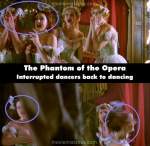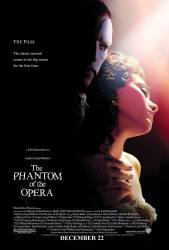
Character mistake: When Buquet hangs over the scene, you can see Meg screaming along with three other dancers. Four shots later, Meg is still screaming, but the two girls who were to her right (on the left of the screen) are still dancing, as if they haven't seen Buquet yet. (01:05:10)






Answer: It is Raoul. He gets the music box because Christine obviously loved it, shown by the fact that she had obviously described and remembered it in such great detail many years after last seeing it. He buys it for her as a gift of love, even though she has died.
mandy gasson